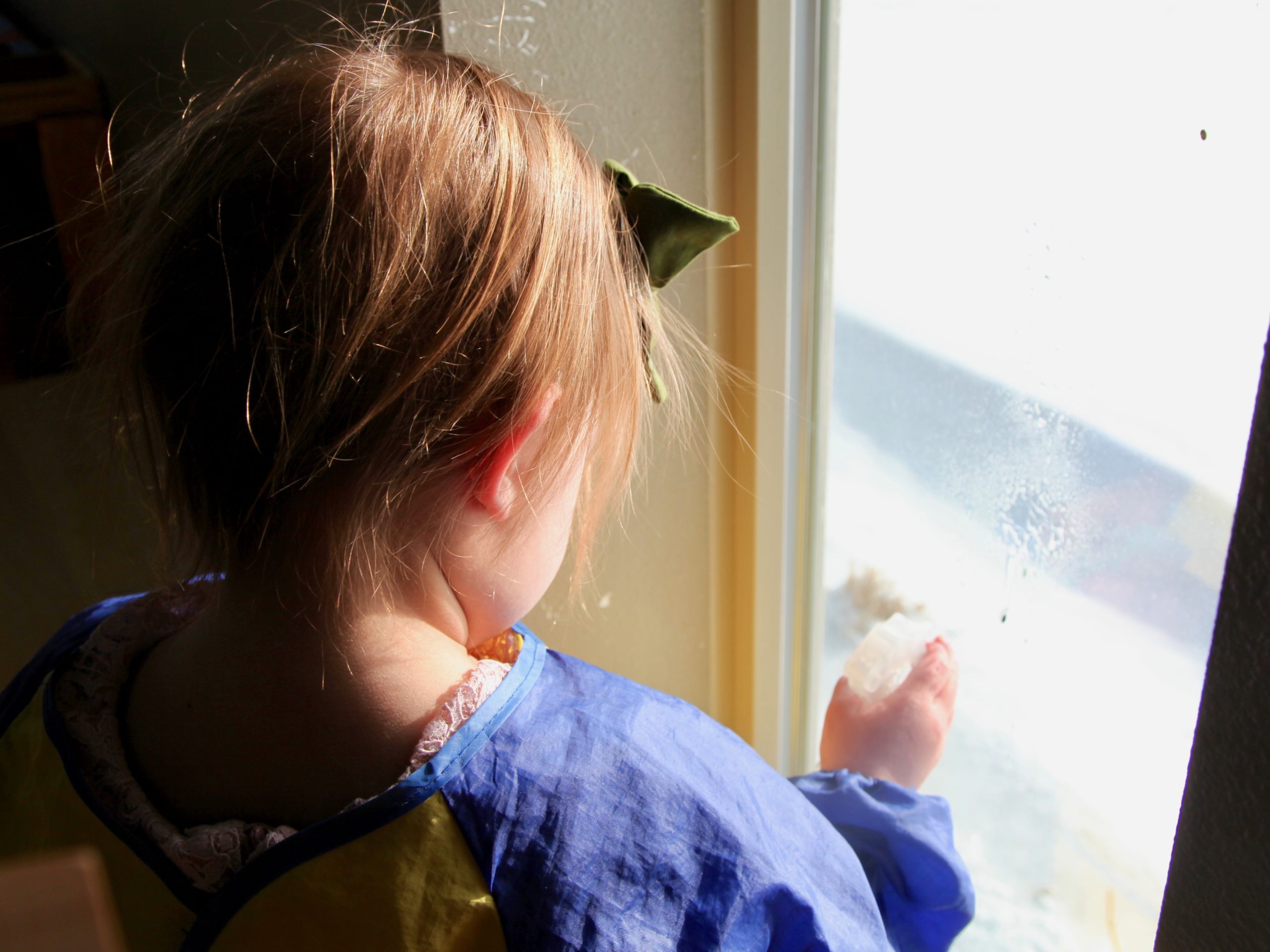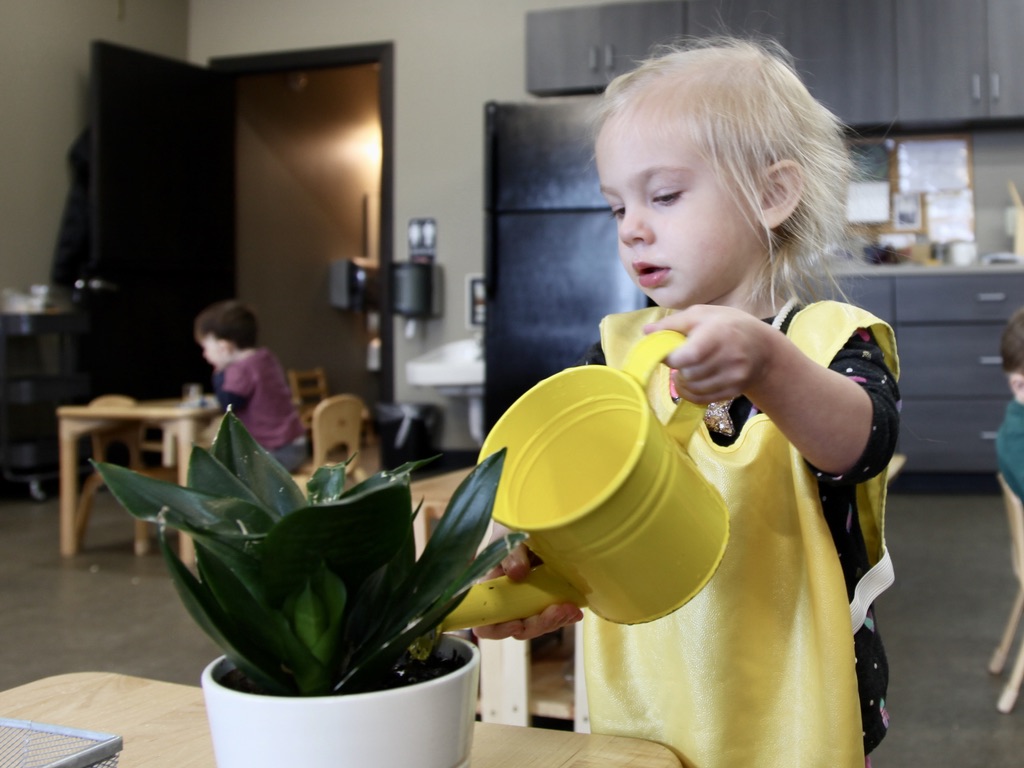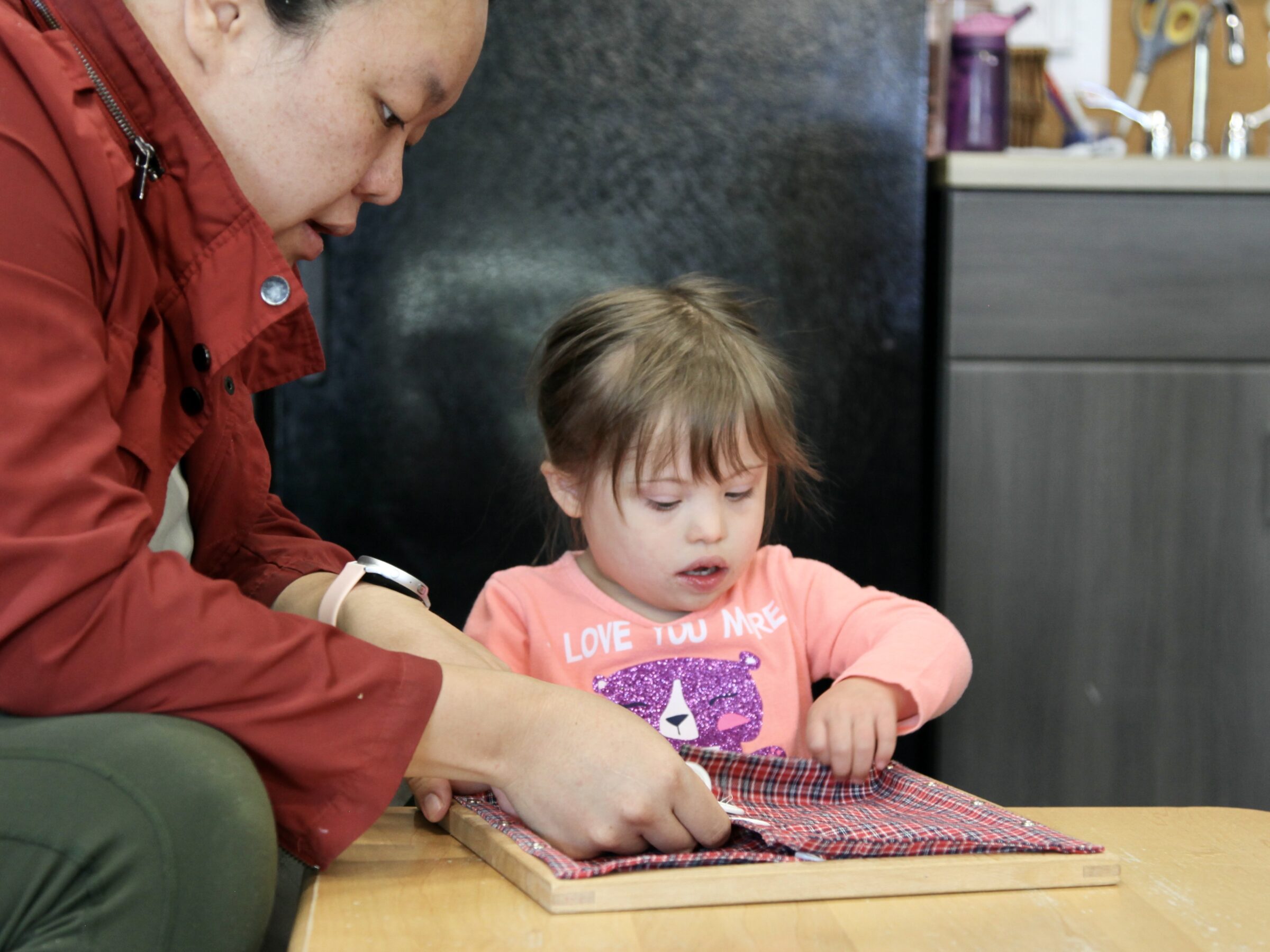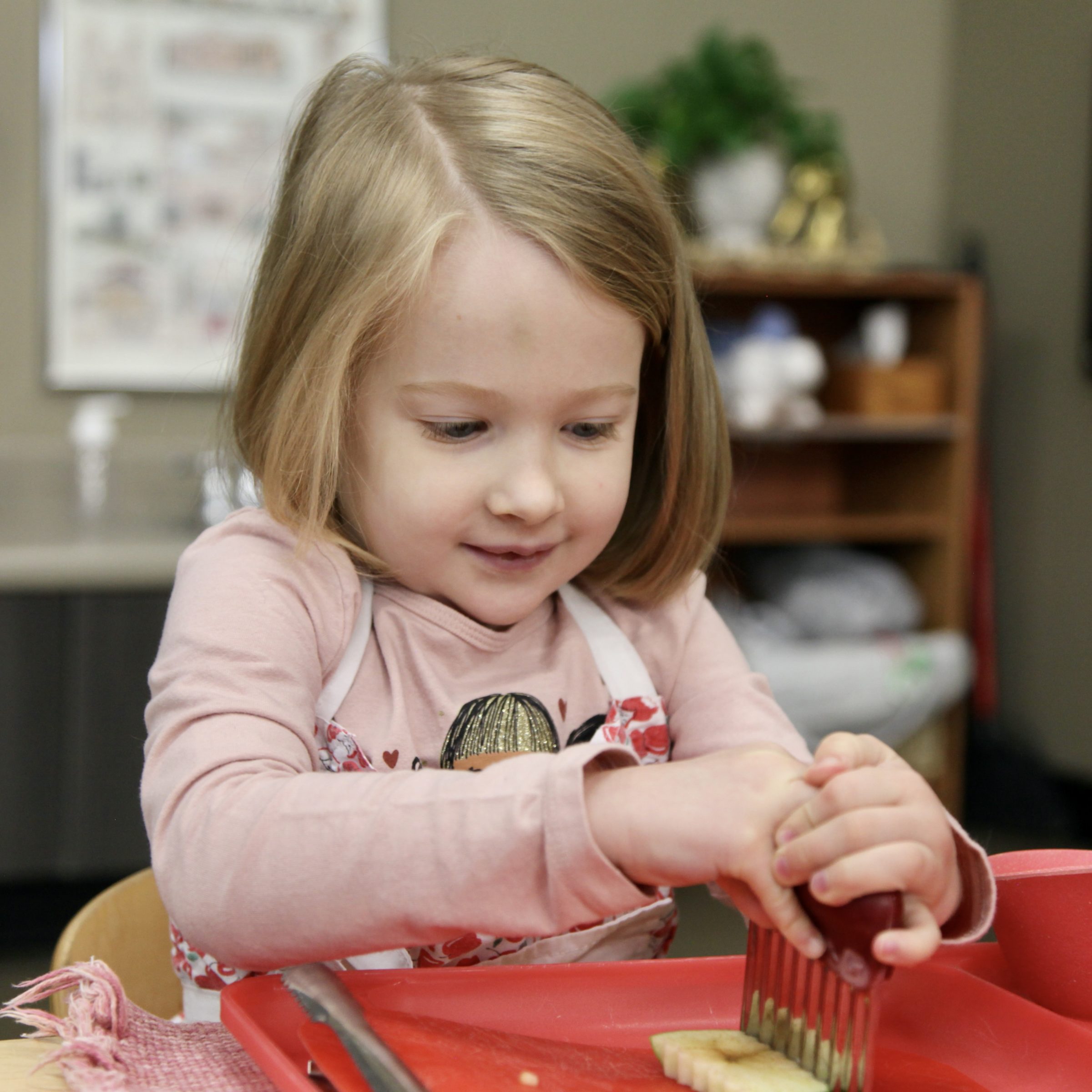Challenge is Essential
Thoughts & Reflections
If you’ve ever peeked into a Montessori classroom, you’ll see children working at various levels of intensity individually and in small groups. You’ll see children concentrating, and as classroom adults it’s our responsibility to protect that concentration.
A young child’s work is completely process-oriented. To paraphrase Dr. Montessori,
“ An adult works to perfect the environment; a child works to perfect themselves.”
When I’m tying a bow, the goal is to tie the bow — on a shoe, on a present — when a child is tying a bow, the goal is to learn how to tie a bow. This is why there are five times to practice tying on a bow frame, and the hope is that a child will get to the end of those practices and start again.
Maybe you haven’t seen this in a Montessori classroom (it’s crystal clear when you spend all day every day observing and you’ve been trained on what to look for, but that’s not everyone’s every day!) but you have probably seen it in your life.
When babies begin to master horizontal movement — like scooting and crawling — they begin to seek opportunities to move vertically. Pulling to standing, climbing up on the sofa and sitting there pleased as can be, finding stairs or even a ladder and scrambling up before their adults have processed what they’re doing — these are not only steps toward walking, they’re development of balance, equilibrium, and coordination. The goal isn’t to make it to the top of the stairs, or to sit on the sofa — to go inside or to be like a big person watching TV, respectively — the goal IS the climbing itself, the physical aptitude.

This is crystal clear when they’re not satisfied to be at the top — they want to do it again and again and again. If the goal were to be at the top, that box would be checked and we could move on with our day. Since it isn’t, our walk around the block becomes walking up and down the steps to every house on the block and we make it all of three houses away from our own before it’s time to go home.
Even earlier, when the first signs of mobility emerge, it’s common for a baby to scoot and stretch and do everything to try to reach for *that thing* that’s just out of their reach. Thinking we’re helping, we push the treasure just a bit closer, and we’re not always rewarded with thanks and a smile. Yes, I want the ball, but more than anything, the ball is the catalyst for what I really want: independence. Freedom. Autonomy.
This is one of those “help isn’t always helpful” moments. I interfere and lift a child to the top of the climbing structure, which tells a child’s internal drive to hush up since I know better. Then I wonder why a child doesn’t want to try new things. It can really make your head spin.
Children look like us, they repeat our actions and words, but their motivation is different — they want to figure out how to be full members of society. They want to be just like us.

Have you ever played one of those group icebreaker games where there’s a secret code and you have to figure it out? There’s one called The Umbrella Game: you list things you’re bringing to a party and if you say “ummm” before your word you’re right and if you don’t you’re wrong. (“I’m going to a party and I’m bringing bananas.” nope. “I’m going to a party and I’m bringing, ummmmm, bananas.” yep!) There’s always some kind of pattern to these games — crossing your arms, double letters, in this case, saying “ummmm” first — and when you’re playing you’re sure to make mistakes before finally figuring out the secret code.
This is a child’s learning experience. What steps were necessary in achieving this goal? Was that part of the process or just a fluke? I didn’t realize I said “okay” and shook my hair out of my face every time I sat down with a child to give a presentation until I saw a child doing precisely that. They thought it was part of the formula. I quickly amended my actions.
When we skip to the end, we’re skipping all fun — all the learning and the struggle and the triumph. Have you ever been reading a book or watching a movie that’s so intense you look up the ending online? Even the most compelling story loses all its magic without the process. The goal of reading the book or watching the movie isn’t to find out what happens in the end; the goal is the emotional journey you go on to get there. Without the opportunity for repetition, it’s none of the buildup, only spoilers.

The transformation from caterpillar to butterfly is a magical one, and quite appropriate when referring to early childhood. It’s pretty mysterious what happens inside that chrysalis for a caterpillar to change into a butterfly, but breaking out of the chrysalis is an important, necessary part of the metamorphosis: this challenging experience forces fluids into the butterfly’s wings and is necessary for flight. Helping almost always has the best of intentions, with a variety of outcomes.
As hard as it is, sometimes the best help is to sit back and watch. When the goal is the end result, and help is needed, help is helpful. When the goal is the challenge and the repetition and the achievements gained, help is really more of a hindrance. Challenge is essential. Challenge is the goal.
Written by:
Charlotte Snyder



